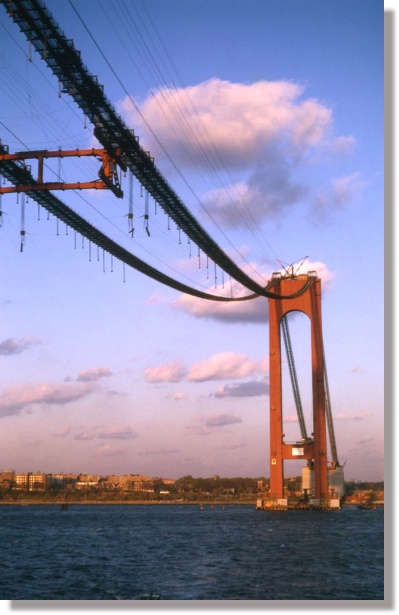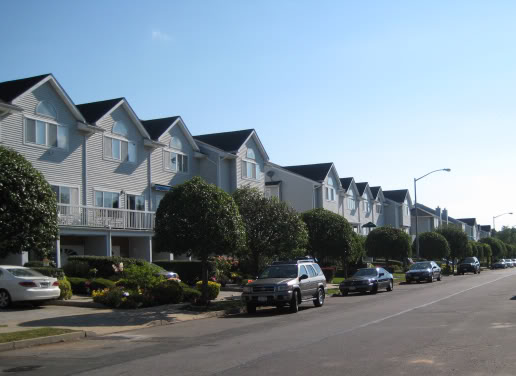The Verrazano Bridge: The Link to ChangeFrom The Peopling of New York City
The BeginningAlthough plans for the Verrazano-Narrows Bridge began in 1910, construction did not commence until 1959 and ended in 1964. Until this time, the Staten Island Ferry was the only means of transportation that linked Staten Island to the rest of New York City. In 1960, the borough made up less than three percent of the city’s population, a meager 222,000 residents, but its 102.5 square mile land mass possessed sixty percent of all of New York City’s undeveloped acreage. Staten Island’s lack of direct surface links with the other boroughs was a major contributor to its rural nature. In the decades following the bridge’s construction, there was a steady increase in the Island's population. According to census information, by 1970, Staten Island's population totaled 295,000. This number rose to 352,000 by 1980, 379,000 by 1990 and in 2000 was at 443,000. Staten Island currently makes up close to six percent of the city’s total population.
Change on the HorizonThe 1960s and 1970s alone brought a total of 130,000 new residents to the borough. However, the island was not equipped to house this many new arrivals and swift changes were in order. As a result, Staten Island experienced a building boom era and began to suburbanize quite rapidly. An estimated 2,500 housing units were built annually between 1964 and 1979, the majority being single-family dwellings. However, the city failed to enact public constraints and further building seemed to occur freely. The lack of subdivision regulations allowed building permits to be issued on unmapped land. The government also sold city-owned land to private developers, further promoting the boom.
ConclusionI have learned through various personal interviews that there is more than one opinion and perception of the Verrazano –Narrows Bridge. I spoke with native Staten Islanders, including Mrs. Santiago, who were able to remember a time before the bridge was built. Most did not seem to mind the isolated nature of the island and its self-sufficiency. “Everything we needed was right here, there really wasn’t a major need to go anywhere else". I also spoke with a CSI student, Celina Mineo, who described her dependence on the bridge as a former resident of Brooklyn. “It really is my lifeline!” The vast changes brought about as a result to the bridge’s construction are still recognizable today. The varying responses I received from these interviews prove that although the Verrazano is only one entity, there are a many different perceptions and uses of this bridge. Many people rely on it as a vital means of transportation and it plays a specific role in the lives of the islanders.
Sources
|



